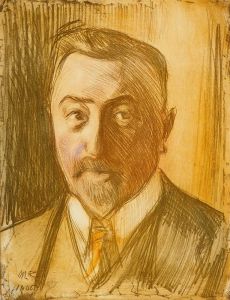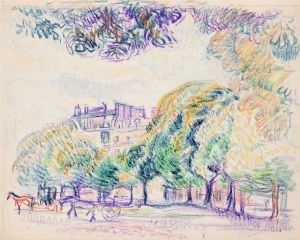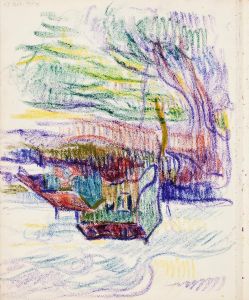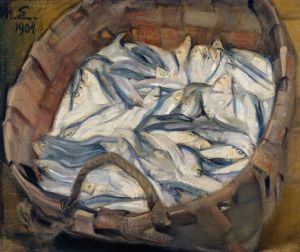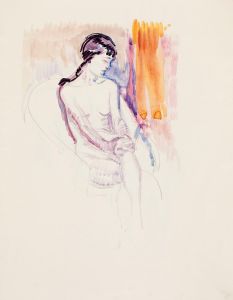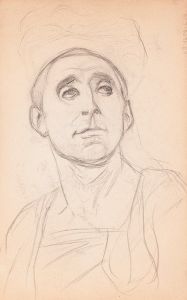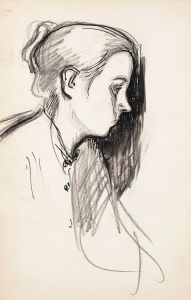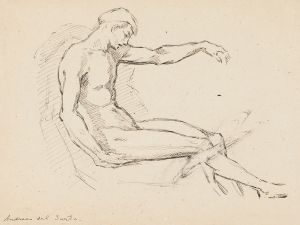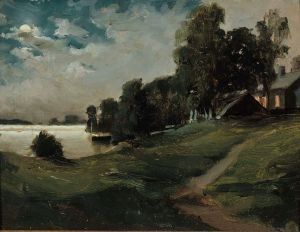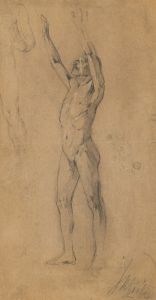
Miehen pää
A hand-painted replica of Magnus Enckell’s masterpiece Miehen pää, meticulously crafted by professional artists to capture the true essence of the original. Each piece is created with museum-quality canvas and rare mineral pigments, carefully painted by experienced artists with delicate brushstrokes and rich, layered colors to perfectly recreate the texture of the original artwork. Unlike machine-printed reproductions, this hand-painted version brings the painting to life, infused with the artist’s emotions and skill in every stroke. Whether for personal collection or home decoration, it instantly elevates the artistic atmosphere of any space.
Magnus Enckell was a Finnish symbolist painter, known for his significant contributions to Finnish art in the late 19th and early 20th centuries. One of his notable works is "Miehen pää" (translated as "Head of a Man"), which exemplifies his unique style and thematic focus during his career.
Magnus Enckell was born on November 9, 1870, in Hamina, Finland. He studied at the Finnish Art Society's Drawing School in Helsinki and later continued his studies in Paris, where he was influenced by the Symbolist movement. This movement, characterized by its emphasis on emotions, ideas, and the symbolic representation of reality, played a crucial role in shaping Enckell's artistic vision.
"Miehen pää" is a portrait that reflects Enckell's interest in exploring the human psyche and the inner world of his subjects. The painting is noted for its simplicity and focus on the subject's expression, which is a hallmark of Enckell's portraiture. His use of color and light often imbues his works with a sense of introspection and tranquility, inviting viewers to contemplate the deeper emotions and thoughts of the depicted individual.
Enckell's work often features a subdued color palette, which can be seen in "Miehen pää." This choice of colors contributes to the meditative quality of the painting, allowing the viewer to focus on the subtle nuances of the subject's expression. The painting's composition is straightforward, with the subject's head occupying the central position, drawing attention to the facial features and the contemplative gaze.
Throughout his career, Enckell was associated with the Symbolist movement, but he also incorporated elements of other styles, such as Impressionism and Post-Impressionism, into his work. This blend of influences is evident in "Miehen pää," where the delicate brushwork and attention to light reflect the impact of these movements on his artistic development.
Enckell's contribution to Finnish art extends beyond his paintings. He was an influential figure in the Finnish art scene, participating in various exhibitions and contributing to the development of modern art in Finland. His work was part of the broader European Symbolist movement, which sought to express the ineffable and explore themes of spirituality, mythology, and the human condition.
"Miehen pää" is a testament to Enckell's skill as a portrait artist and his ability to convey complex emotions through simplicity and subtlety. The painting remains an important part of his oeuvre, showcasing his mastery of form and his deep understanding of the symbolic potential of art.
Magnus Enckell passed away on November 27, 1925, in Stockholm, Sweden, but his legacy continues to influence Finnish art. His works, including "Miehen pää," are celebrated for their introspective quality and their contribution to the Symbolist movement in Finland. Today, Enckell is remembered as one of Finland's most important artists, whose work continues to be studied and appreciated for its emotional depth and artistic innovation.






